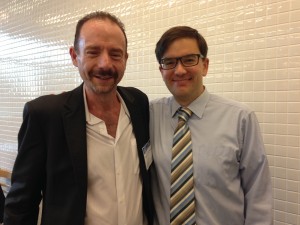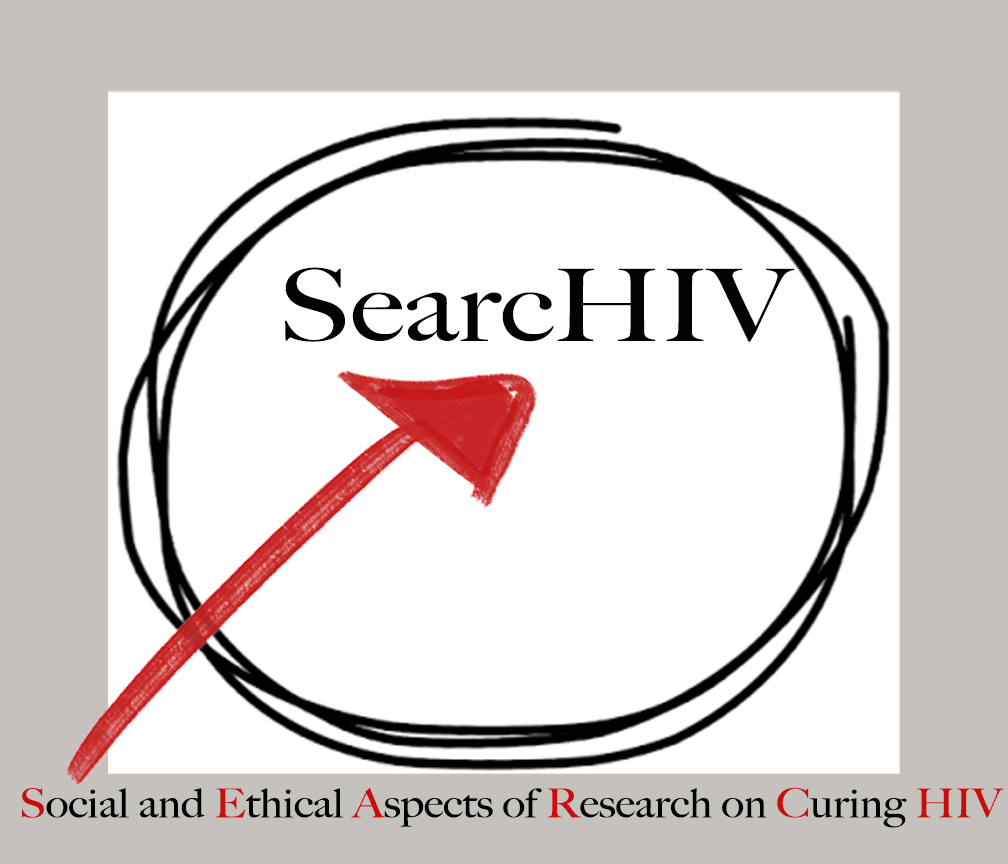
Timothy Ray Brown is currently the only person considered to be cured of HIV and is the co-founder the Cure for AIDS Coalition with Dave Purdy. searcHIV had the opportunity to interview Timothy Ray Brown and Dave Purdy about their thoughts on HIV cure research and the founding of their organization. We are sharing it today in recognition of World AIDS Day 2014.
searcHIV: Your organization, the Cure for AIDS Coalition, is the first AIDS public-benefit corporation. This means that the organization can lobby and generate revenues, but all in the service of the larger social goal of curing HIV. Why did you decide to register as a public-benefit corporation and how will this be sustainable over time?
Timothy and Dave: Great question. We specifically put ‘Cure For AIDS Coalition, Public Benefit Corporation’ on all of our materials so that people will ask us what that means. It’s a learning opportunity. First, there are so many AIDS-related organizations struggling to get by day to day. Originally we were going down the path of a 501(c)(3) not for profit organization. But we felt we could potentially suck the air out of the room and potentially hurt really great organizations that are struggling and relying on grants and donations just to survive. We believe competition can be healthy, but not at the expense of hurting our brother and sister AIDS organizations that are doing really amazing work. The public benefit corporation designation is fairly new and we feel it is a better fit for our mission. And you are right, we can lobby the hell out of Congress and elsewhere to fully fund HIV/AIDS cure-related research. For any organization that relies solely on grants and donations to survive, like many 501(c)(3) not for profit organizations, all it takes is a little financial earthquake for things to go tumbling in the wrong direction. We feel strongly that our public-benefit corporation model provides us with more options for funding and access to unique resources so that we at least have some control over our own destiny.
searcHIV: What are some of the common misconceptions about HIV cure research that you have come across?
Timothy and Dave: In my case (Timothy Ray Brown), people seem to think I hit the lottery and that my cure is applicable to any patient living with HIV or AIDS around the world. The fact is, I represent proof of concept for the global scientific community. That a cure for AIDS is possible, when everyone felt it was absolutely impossible. Another misconception is that HIV lives in my body somewhere. Every test imaginable has been performed on me to try and find HIV living or hiding somewhere, including my brain. There is no live HIV in body; scientists now refer to my cure as a sterilizing cure. I haven’t taken antiretrovirals since the first day of my stem cell transplant in 2007. The HIV is gone and it is gone for good. And I am also cancer free. Two cures; I am really fortunate and blessed.
searcHIV: How can the media do a better job of informing people about HIV cure research?
Timothy and Dave: Keep the general public aware of ground breaking and unique HIV/AIDS cure-related research that is happening around the world. There will always be victories and challenges in research, which is the nature of science. When it was determined that the Mississippi Baby, Los Angeles Baby and Boston Patients were not cured, we think Science took a pause as opposed to two steps back as portrayed by some scientists and media agencies.
We learned a heck of a lot in all of those cases and we will continue to learn even more moving forward. The cure for HIV was not behind door number one or door number two. But, perhaps it’s behind door number three, four or five. I have been told so many times that hope is alive in me (Timothy Ray Brown). We have something that we can all be proud of as a community. I know I am proud of my cure, which is why I work so hard every day in the effort to find a cure for HIV/AIDS.
searcHIV: What social, cultural, political, and ethical obstacles to finding a cure for HIV worry you most in the short and medium term?
Timothy and Dave: Big question. Socially, we need to make sure that a cure for HIV/AIDS is applicable to everyone around the world. Especially those living with HIV today and long-term survivors, not solely patients that are newly infected.
Culturally, we need to make sure that the word “cure” is used appropriately and not thrown around like it is the new Prada bag, the new “it” thing. Using the word ‘cure’ is really about hope. It needs to be used, but it must be used wisely and with sensitivity to all cultures.
Politically, don’t get me started. First, here in the U.S. the search for a cure is not a Democrat or Republican issue. Countless souls, some with us today and many who are not, have had an impact on the war against AIDS. For us, for them, it was never about color or politics. It has always been about survival, living a quality life, and of course, helping others in need.
Just like all scientific research, we need to always think of the patient first. Be upfront and honest about HIV cure research. Research is not going to be easy, but it is critical in finding a cure for HIV and a vaccine. Everyone has to help in some way, including advocacy, education, support for full funding, or participating in cure-related HIV/AIDS clinical trials. It is an all hands on deck, Manhattan Project gigantic undertaking. But if you look at the history of cures in this century, finding a cure for HIV can absolutely be done, especially with the technology and resources we have today.
searcHIV: How do you think we can improve the experience of people participating in HIV cure research?
Timothy and Dave: Let them know how important their contribution is to finding a cure for HIV. Thank them countless times for their energy, time and efforts to make a difference, if not for themselves, then others down the road. Don’t make them feel like a study participant, but more like a hero, which they are. And keep them informed personally on how their contribution made a difference, even if it may not actually be “the” cure. And finally, put value on their contribution in the form of support or even money. Even if they don’t need it. Man and Woman up! Show them through actions that they are valuable and worthy. And keep them informed of the progress of the research even if there is no answer yet. Communicate.
searcHIV: Your team has participated in a lot of interviews. What is a question that you haven’t been asked, but you wish you had?
Timothy and Dave: Here’s one: “Hey, want to go have a drink?” But seriously. We are accessible and we are approachable (we hope at least) and we are human beings, just like you. AND we all have a story. We love hearing other people’s stories. They are just as important as the story of the Berlin Patient, Timothy Ray Brown or Dave Purdy. Sharing also evokes a sense of community and we hope that the search for a cure for HIV will bring all communities together, including bringing the AIDS and LGBTQ communities back together again. Just like in the early days of AIDS. Come together and let’s all share our stories.


One Response to “A Conversation About Curing HIV with Timothy Ray Brown and Dave Purdy”
Anonymous
This is an amazing interview! Proud to be a part of the team 🙂 -Allison